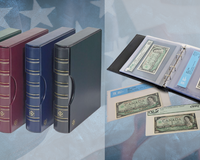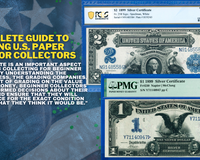Money was created for trading for goods such as exchanging money for a new T-shirt. The shells and rocks were used as pre-modern money. However, they won’t last long, also it is hard for the owners to bring them or walk them around without being stolen. Therefore, a thin and light material was brought to printing money which nowadays is still in use in each hand of us.

The shells were once considered a currency in history
The sea snail shells are also a form of the peer that was used very early in some Asian, African, Arab, and even European countries. Sea shells are small in size, easy to carry, durable in color, and difficult to fake. These beautiful shells have been used both as jewelry, as an ornament, and as a form of money in trade since the 16th century BC.
Which country was paper money invented?
Paper was first created in China in the 7th century during the Tang Dynasty (618-907). But paper money didn’t exist until the 11th century. The first paper banknote was invented in China. It is a form of deposit from a merchant during the Tang Dynasty.

One of the first banknotes invented by China in the Tang Dynasty
To avoid the super heavy of the copper during transitions to the merchants and the wholesales. Metal coins were made up of gold, silver, copper, and many other metals. They were used mainly for trading goods globally. However, they would be incredibly heavy when you had too many of them.
Therefore, many merchants started leaving their bulky coins in a place they can trust to keep them for them, in exchange, the merchants will receive a piece of paper showing the deposit they owned. A remarkable invention that was created accidentally. Observed advantages of paper banknotes. By the 1120s, the central government started printing their own paper money by using woodblock printing (using 6 colors of inks). Jiazi, the exact paper banknote was finally developed in the 11th century under the Song Dynasty’s power. Since the lack of copper to produce coins. However, the Jiazi didn’t officially replace the coins but are still in use.
Not until the Mongol Empire adopted paper money from the Yang Dynasty (1271-1368), the paper banknotes were issued as the official currency throughout China. That is Jiaochao. After conquering the north of China in 1142. Jurchen Jin Dynasty didn’t have its own currency and had to reuse the coin of the Liao Dynasty. Until 1154, Wanyan Liang, the fourth emperor of the Jurchen Dynasty, had developed the Jiaochao banknotes.
The denominations of Jiaochao are 10 which come in large bills and small bills. Large bills including 1, 2, 3, and 5 guàn. And small bills including 100, 200, 300, 500 and 700 wén. One guàn equaled 15 wén. Because of the hyperinflation, the Jiaochao banknotes soon were replaced by the new banknotes called Baoquan but it had an identical result. However, under the Mongol Empire’s control, the Jiaochao was in practice again. It all depended on Ghengis Khan who is the first Emperor of the Mongol empire, he plays the main role in spreading paper money throughout China. After conquered China in the 13th century. He was obsessed with paper money so he took over everyone’s gold and silver and gave only paper money in return. Any objections to his paper banknotes will result in execution. Chinese citizens were forced to use these paper banknotes as the only choice. His grandson, Kublai Khan in 1260, creates two new different Jiaochao banknotes. Its first try was failing by using silk. In contrast, the second try of Jiaochao banknotes which used the silver standard was unexpectedly successful. The Jiaochao was recorded as the first paper money to function in circulation in the history of China. In 1350, Zhizheng Jiaochao the final banknote series was issued. Unfortunately, since 1455, paper banknotes in China disappeared for several centuries.
The reception of European countries to paper money.
Paper banknotes existed in Europe much later than in Asia. Because European countries didn’t obtain the paper. The production of paper was stopped due to the prejudice of the Christian religion. Because the paper in Europe was made up of heather moors. This led to the ban of documents that were written on paper by the Holy Roman Emperor Frederick II in 1221. However, the paper was still in progress because it was comfortable.
In 1296, Marco Polo- who is known as the bridge of the paper money spreading to Europe. He was a traveler through Europe to Asia from 1271 to 1295, and his stay in China took 17 years. He was interested in Kublai Khan in Mongol Empire so he stayed in the empire’s lands and had observed many unimaginable things that never existed in Europe. Including the concept of paper money. In 1291, Marco Polo returned to Venice after 24 years of voyaging and brought it with him. However, long afterward the first paper banknotes finally appeared in Europe in Sweden in 1661.
 The first paper money was issued in Sweden in 1661( Sourcing Spink.com)
The first paper money was issued in Sweden in 1661( Sourcing Spink.com)
Much likely as the history of China. Sweden first used gold and silver to make a coin currency. However, due to the limited of those metals, they seek out another material to produce currency which is copper. But it was heavy and large. Also, it still is copper, it cannot be compared to gold and silver. Therefore, they are only used for small transaction practical. As a result, in 1660, the central government of Sweden operated to replace these coins with a lower weight kind of material. On the other side, many depositors demanded a higher metal value back which led to a bank run. To solve this problem, Johann Palmstruch processed the deposit certificates, also called credit notes. People who took the certificates would be no longer have to depend so much on money deposits to able to borrow money. Instead, they will be loaned these new certificates. In further, this new banknote can be used to pay anything. Consequently, the new banknotes became viral because of their benefits such as safety, weight lighter, and the boosts it gave to Sweden’s economy. Observing those benefits, many European countries started issuing money paper on their own. In 1694, the Bank of England was established and started issuing handwritten banknotes. Over time, the paper banknotes’ denomination began raging from £20 to £1000 in England by the 18th century.
When did the U.S. start using paper money?
By the time of the Revolutionary War, the Massachusetts Bay Colony issued the first paper money in the United States to support the aid of the military against Canada. On February 3, 1690, the first paper money was authorized in Western. It was called credit. Soldiers would use or trade it like silver and gold.

The first paper money issued in the U.S
Image: Smithsonian National Museum of American History by Leonard H. Finn
Even though Britain was trying to suppress other colonies to issue their currency. The expenses for paying military bills were covered by this credit which just is a temporary way to cover the lack of money by saying “pay later”. In 1775, the Continental Congress issued the first American national paper money known as Continental currency or Continentals. Its denomination is from $⅙ to $80 in dollars.
By the war had ended, the paper money was devalued and became almost worthless, only leaving ⅕ to 1⁄7 of its original value. Soon, in 1780, Congress had no idea but stopped printing them. Because Great Britain banned the circulation of new paper money and weakened the economy by making fake money.
On January 7, 1782, the Bank of North America was opened in Philadelphia by Robbert Morris and it converted from notes to gold and silver. Ultimately, the US dollar was introduced as the new currency of the United States by the Continental Congress on July 6, 1785, the Dollar symbol was adopted from the Spanish American figure Pesos. In 1791, the Bank of United States was founded by Alexander Hamilton, it is the new system of credit needed for the government, it established its currency for borrowing and lending for facilities. After the civil war in the United States, on April 2, 1792, Congress passed the Mint Act ( Coinage Act) which the US dollar was acknowledged as the country’s standard unit currency. This act made the United States become the first country to adopt decimal in its currency of the world.
Paper money now is threatened by another new better material to be replaced. But in the past, the value of paper money became a senseless symbol. It marked a new invention in human history. It replaced the super classical type of currency, coins. It paved a new path for humans can be more creative to have a better life afterward.
Learn more: Exploring U.S. Small Size Notes From 1928-Present











1 comment
wentworth catlow
moneky